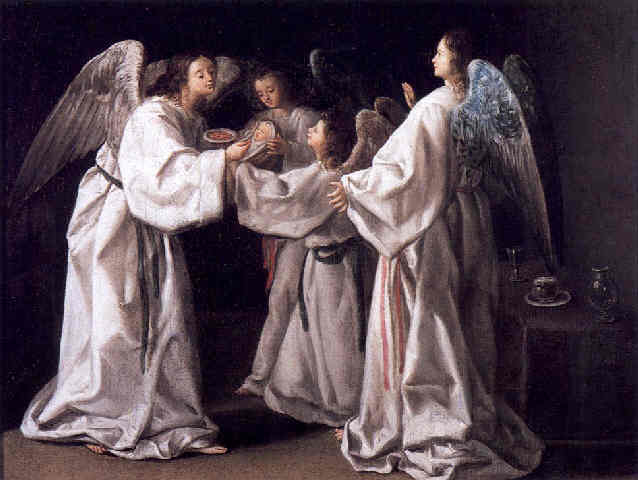Eugenio Caxés on:
[Wikipedia]
[Google]
[Amazon]

 Eugenio Caxés (1574/75 – 15 December 1634) was a Spanish painter of the Baroque period.
Eugenio Caxés (1574/75 – 15 December 1634) was a Spanish painter of the Baroque period.

 Eugenio Caxés (1574/75 – 15 December 1634) was a Spanish painter of the Baroque period.
Eugenio Caxés (1574/75 – 15 December 1634) was a Spanish painter of the Baroque period.
Biography
He was born into a Florentine family inMadrid
Madrid ( , ) is the capital and most populous city of Spain. The city has almost 3.4 million inhabitants and a metropolitan area population of approximately 6.7 million. It is the second-largest city in the European Union (EU), an ...
, and wrote his name in a variety of ways (Cajés, Cazés, Caxesi, and Caxete). His father, Patricio, was a disciple of Alessandro Allori
Alessandro di Cristofano di Lorenzo del Bronzino Allori (Florence, 31 May 153522 September 1607) was an Italian painter of the late Mannerist Florentine school.
Biography
In 1540, after the death of his father, Allori was brought up and trai ...
and was recruited to Spain by the ambassador Luis de Requesens. Caxés painted in the royal palaces of King Philip II of Spain
Philip II) in Spain, while in Portugal and his Italian kingdoms he ruled as Philip I ( pt, Filipe I). (21 May 152713 September 1598), also known as Philip the Prudent ( es, Felipe el Prudente), was King of Spain from 1556, King of Portugal fro ...
. He married the daughter of the disgraced Juan Manzano, master carpenter for the Escorial
El Escorial, or the Royal Site of San Lorenzo de El Escorial ( es, Monasterio y Sitio de El Escorial en Madrid), or Monasterio del Escorial (), is a historical residence of the King of Spain located in the town of San Lorenzo de El Escorial, ...
, who died in a fall from a scaffold.
Caxés was commissioned by the administration of King Philip III to decorate the room for royal audiences in Madrid, where he painted a '' Judgment of Solomon'' in the vault. He was appointed Painter to the King in August 1612. Most of his works were completed in Madrid. Along with Vincenzo Carducci he painted the chapel of Our Lady del Sagrario in Toledo
Toledo most commonly refers to:
* Toledo, Spain, a city in Spain
* Province of Toledo, Spain
* Toledo, Ohio, a city in the United States
Toledo may also refer to:
Places Belize
* Toledo District
* Toledo Settlement
Bolivia
* Toledo, Orur ...
, and the canvases of the Retablo Mayor del Monasterio de Guadalupe
Guadalupe or Guadeloupe may refer to:
Places Bolivia
* Guadalupe, Potosí Brazil
* Guadalupe, Piauí, a municipality in the state of Piauí
* Guadalupe, Rio de Janeiro, a neighbourhood in the city of Rio de Janeiro Colombia
* Guadalupe, A ...
. He was awarded 11,000 ''reales'' for a large historical canvas on the ''History of Agamemnon
In Greek mythology, Agamemnon (; grc-gre, Ἀγαμέμνων ''Agamémnōn'') was a king of Mycenae who commanded the Greeks during the Trojan War. He was the son, or grandson, of King Atreus and Queen Aerope, the brother of Menelaus, the husb ...
'' (now lost). Among his pupils are Luis Fernández and the barrister Valpuesta.
He opposed a fee proposed to extend the ''alcabala'' to painters.
The Prado Museum owns an ensemble of paintings and drawings by Caxés, and also at the Real Academia de Bellas Artes de San Fernando
The Real Academia de Bellas Artes de San Fernando (RABASF; ), located on the Calle de Alcalá in the heart of Madrid, currently functions as a museum and gallery. A public law corporation, it is integrated together with other Spanish royal acad ...
another religious work ''Embrace at the Golden Gate'' can be seen''.''
References
* {{DEFAULTSORT:Caxes, Eugenio 1574 births 1634 deaths Artists from Madrid 16th-century Spanish painters Spanish male painters 17th-century Spanish painters Spanish Baroque painters